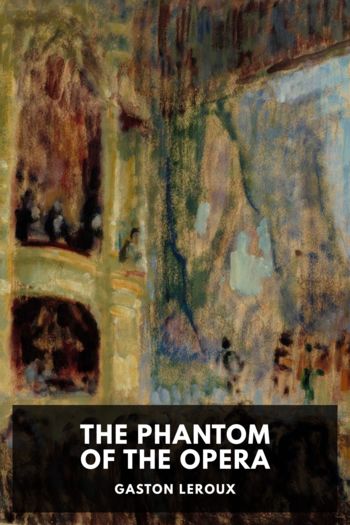The Banker Who Crushed His Diamonds Furquan Moharkan (books to read in your 20s .TXT) 📖

- Author: Furquan Moharkan
Book online «The Banker Who Crushed His Diamonds Furquan Moharkan (books to read in your 20s .TXT) 📖». Author Furquan Moharkan
A comfort letter, also called a letter of intent, is a business document that is intended to assure the recipient that a financial or contractual obligation with another party can and will be met. The sender is often an independent auditor or accountant. This was probably when Rana Kapoor got his first taste of the limelight. He had successfully aided India’s first LBO. At that time, the deal, which saw an Indian company acquire a foreign company thrice its size, was the biggest ever in India’s corporate history, worth a staggering Rs 1870 crore (£271 million).
The acquisition was to be financed with £70 million pounds of equity, of which £60 million would have come from Tata Tea. The balance £10 million would be raised from Tata Tea Inc USA, a wholly owned subsidiary of Tata Tea. Tata Tea’s global depository receipt (GDR) issue was to finance £45 million of the equity component. Of the debt component, £20 million was set to be raised by issuing subordinate vendor loan notes and the balance was to be raised through debt offerings arranged by Rabobank, which was the investment adviser to this deal.
After this, the trio started working for the licence of the bank. They used to frequent the RBI so often those days that the officials there gave them a moniker of ‘three musketeers’. But the majority of these negotiations were done by Harkirat because he was the most well-known face among the three. ‘He was known in the global banking industry because he was very close to the then finance minister and the RBI babus,’ a person who knew all three of them said. In fact, in 2000, Harkirat had also met Finance Minister Yashwant Sinha for these negotiations.
Back then there was a gentleman, late S.P. Talwar, then the deputy governor of the RBI. Talwar used to see the three musketeers slogging away at the RBI office every day. In 1997, Governor C. Rangarajan had divested Talwar of his key portfolios, which were later restored during Governor Bimal Jalan’s tenure.
‘There were whispers that it was Talwar who was responsible for granting a provisional banking licence to the dubious CRB Group which later went bust,’ veteran journalist Sucheta Dalal noted in a piece in Moneylife in August 2010.3 More about Talwar later, but for now let’s keep our focus on Harkirat Singh.
At that point of time, when the RBI gave the licence to the bank, M.R. Srinivasan was the chief general manager in-charge of RBI’s department of banking operations and development. His appointment to the post had come around the time when the world was transitioning into a new millennium.
RBI documents say this about the functioning of the department of banking operations and development: ‘Its functions broadly relate to prescription of regulations for compliance with various provisions of [the] Banking Regulation Act on establishment of banks such as licensing, branch expansion, maintenance of statutory liquidity, management and operations, amalgamation, reconstruction and liquidation of banking companies and issue of guidelines on Prudential Norms relating to Capital Adequacy, investments and loans. In order to achieve its objective, it has to maintain a flexible organizational set-up with activities in tune with the time.’
In essence, Srinivasan was in charge of the department that gave the in-principle licence to the bank that would be later named YES Bank. Why I am explaining it here will become clear in the later part of this chapter.
The three partners had received the RBI’s in-principle approval for setting up a bank in the private sector on 7 February 2002. The local promoters (Harkirat Singh, Ashok Kapur and Rana Kapoor) were to together hold 51 per cent in the new bank.
In 2003, the three made a fortune. They sold their holding at Rabo India for $10 million (around Rs 40 crore to Rs 50 crore at that point of time). In the same year, when the bank, which hadn’t been named till then, was expected to commence operations by August, Harkirat Singh, who had tirelessly worked towards starting it, pulled out.
Explaining his decision, Harkirat, in the news reports from that time, was quoted saying: ‘There is no longer a complete alignment with the vision going forward.’ Just days before this, Rabobank had come out with a statement saying that Harkirat would not have a major role to play in the bank and would be just a shareholder.
Why had this happened? There seemed to be a tussle even before things got going. I spoke to a person who knew all the three men and was in the thick of things back then. It had been decided that Harkirat would be the executive chairman of the bank, Ashok Kapur would be the CEO and Rana Kapoor a director. The three Indian partners, who had reaped a windfall by selling their shares at Rabo India, were to pitch in equity of Rs 40 crore each.
In early 2003, Harkirat, who his friends called Harki, had gone for a family vacation to Mauritius. Back in India, Rana thought of doing the unthinkable. He convinced Rabobank to place bets on him as managing director (MD) and CEO, and Ashok Kapur as the CEO. Till then, Harkirat was completely unaware of the decision. He came to know when he returned to India after a week.
How were they able to pull it off? Apparently, Rana had bribed one of the senior Rabobank officials in India. ‘He had bribed a senior Rabobank guy with £1 million,’ one person, who was part of the redressal process between the





Comments (0)